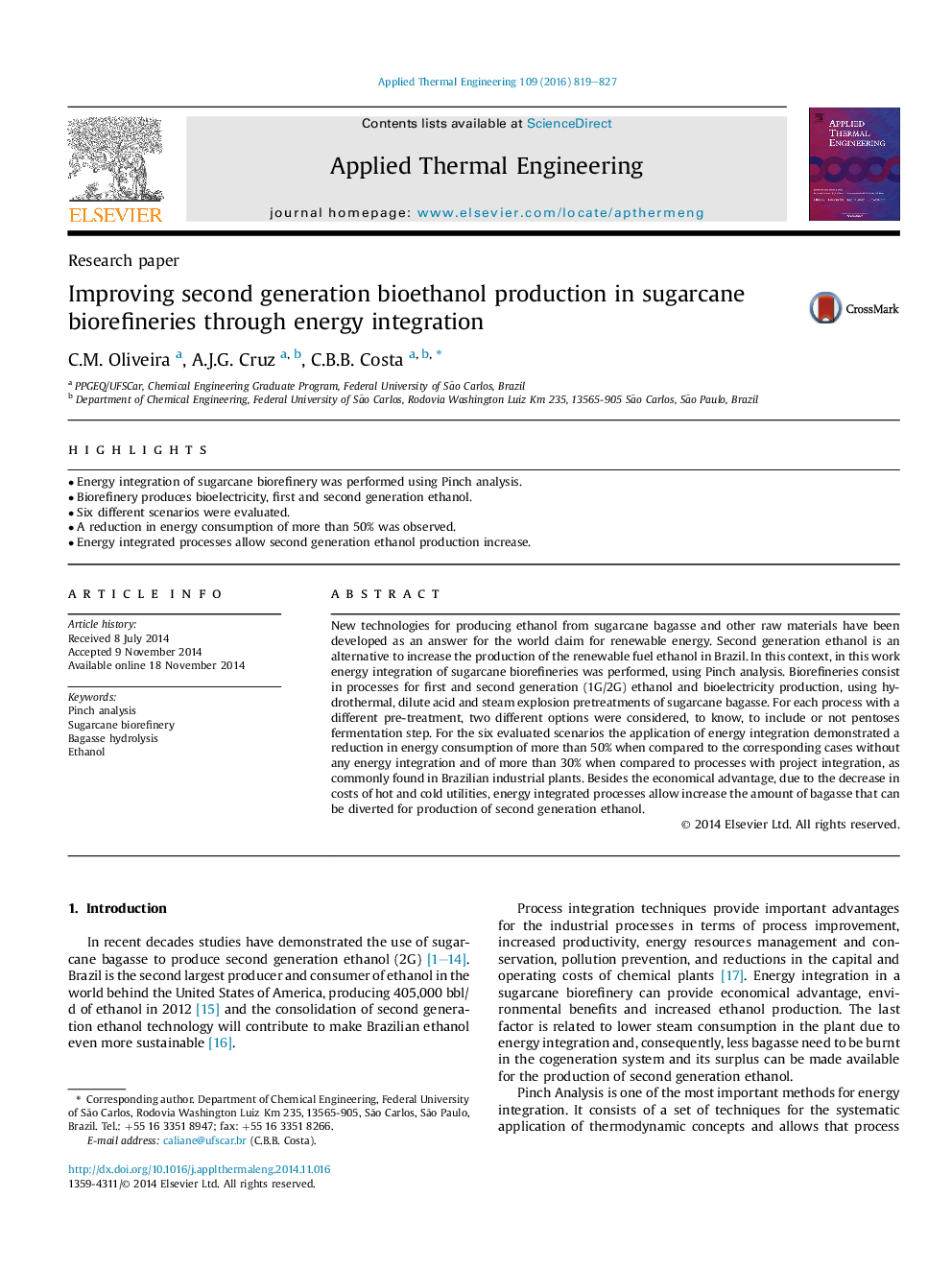| Article ID | Journal | Published Year | Pages | File Type |
|---|---|---|---|---|
| 6481208 | Applied Thermal Engineering | 2016 | 9 Pages |
â¢Energy integration of sugarcane biorefinery was performed using Pinch analysis.â¢Biorefinery produces bioelectricity, first and second generation ethanol.â¢Six different scenarios were evaluated.â¢A reduction in energy consumption of more than 50% was observed.â¢Energy integrated processes allow second generation ethanol production increase.
New technologies for producing ethanol from sugarcane bagasse and other raw materials have been developed as an answer for the world claim for renewable energy. Second generation ethanol is an alternative to increase the production of the renewable fuel ethanol in Brazil. In this context, in this work energy integration of sugarcane biorefineries was performed, using Pinch analysis. Biorefineries consist in processes for first and second generation (1G/2G) ethanol and bioelectricity production, using hydrothermal, dilute acid and steam explosion pretreatments of sugarcane bagasse. For each process with a different pre-treatment, two different options were considered, to know, to include or not pentoses fermentation step. For the six evaluated scenarios the application of energy integration demonstrated a reduction in energy consumption of more than 50% when compared to the corresponding cases without any energy integration and of more than 30% when compared to processes with project integration, as commonly found in Brazilian industrial plants. Besides the economical advantage, due to the decrease in costs of hot and cold utilities, energy integrated processes allow increase the amount of bagasse that can be diverted for production of second generation ethanol.
